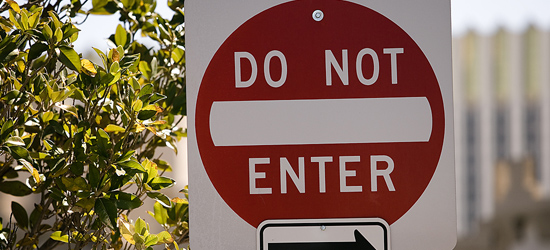Everyone is familiar with having a “To Do List”. But for many individuals the bottleneck to their productivity isn’t the lack of knowing what to do. Just as important as knowing what to do is knowing what not to do. That is where a “Not To Do List” comes in.
Your not to do list should contain the activities that you consistently find yourself doing that don’t contribute to your life in a productive way. For example, most people would have “check email” as an item on their To Do list. But if you find yourself consistently distracted by incoming messages, you might want to put checking email every 5 minutes on your Not to Do List. Other things that might make their way to a Not To Do List are:
- Eating after 8pm.
- Mindlessly channel surfing in the evenings.
- Browsing the web during work hours.
By intentionally making a list of things that you are not going to do, you are better able to focus on tasks that add value. Just because something is on your Not To Do List, doesn’t mean it is a bad activity. It can just be something that you are going to leave out for awhile in order to concentrate on more productive activities. For example, you might put watching television on your Not To Do List for a week when you know that you’ll be particularly busy.
The point of a Not To Do list is to prioritize, not just from the top down, but from the bottom up as well. What you don’t do is important because what you leave out makes way for things that are more important.
Originally published on September 28, 2006.

I think the concept of a not to do list will help to relay what hinders your productivity and hinders your progress towards your goals.
The only things that I may have a problem with this list is the possibility of moving away from the highly important “break times” that are of course somewhat unproductive, yet actually benefit your productivity later. The only other thing is that this list could become unending and hinder your productivity in its production. Focusing so long on what can hurt you may pull away from focusing what could benefit you.
In all though, I think this would provide a fantastic aspect to the general project and goal setting practices. A lot of the time we focus on how we will be productive and and how something will be completed, but we fail to recognize what may lead us astray.
Thank you for this, I will keep this in mind when I construct my to do lists.
I don’t have a “not to do list” so much as a note taped to my desk reminding me not to make up stuff to do to avoid doing important, if uncomfortable, things. It’s worked pretty good so far.
We’ve been calling it an FIL – a “F[*]ck It List” or a (more pg) “Forget It List”.
Good idea. Good to think through what makes us unproductive – and it’s different for different people. When I’m procrastinating I read through my feed reader – almost unlimited amount of time can be spent doing that!
This is a great concept. I agree with Steve, my feed reader takes sooo much of my time.
Smart minds!
Do, Don’t Do, Stop Doing
http://matthewcornell.org/2009/02/do-dont-do-stop-doing.html
Interesting post here… a bottom-up approach to plannin`…
never thought on those lines before..!